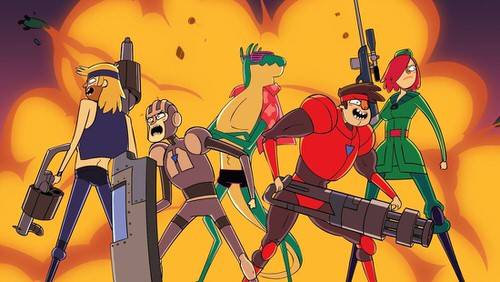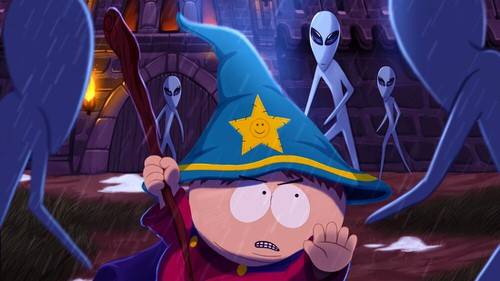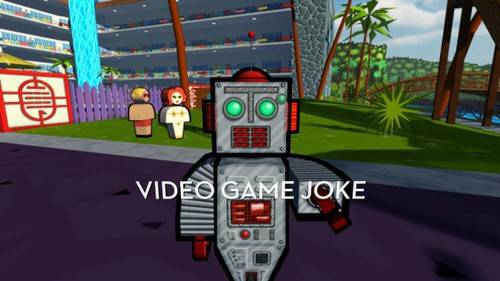Editor’s Note: This was originally published by our partners at Kill Screen as part of Kill Screen’s Year In Ideas series.
I was embarrassingly huge on the ClayFighters series as a kid. I drew fan art in class. One day the teacher caught me and I had to deliver a show-and-tell presentation on every image, as I had dedicated entire blank pages to a character’s portraiture.
I cherished the June 1997 issue of Nintendo Power, where ClayFighter 63⅓ was the cover story, and would read it by flashlight under the covers during a cottage trip when I’m sure many other kids had moved on to embargoed nudie mags. This is shameful due to the specific, important, unavoidable fact that the ClayFighter games are god-awful.
For more stories about video games and culture, follow@killscreen on Twitter.
As a fighting game, it’s stale and unbalanced, trying to ride the coattails of Mortal Kombat. As a work of comedy, it’s arguably worse, starting with the fact that its title fighter is an angry snowman named “Bad Mr. Frosty,” which sure doesn’t sound like a first choice, and ending with an Asian caricature in a karate gi who shouts “NO MSG” as a battlecry. The only logical reason that I—and presumably enough likeminded youngsters to keep the series afloat—lined up is that they tried to be funny, at least. It was a series built on the foundation of comedy material that’s just glad to have an audience.
See also: The Year In Video Game Maps
The me today and the me yesterday would at least agree that humor makes everything better. Cinema. Art. Music. Sex. Dinner. Even funerals, just to remind the procession they’re still alive. I landed with ClayFighters and the also-unfunny-and-unfun Gex because they knew that by advertising themselves as the class clowns they could wear red shiny noses to distract from their sad frumpy bodies.

Funnier games, better games, have come out over the years, from Monkey Island to Portal to this year’s Super Time Force. As good as the gags are, they still carry some laurels of their Redneck Rampage heritage. It’s nice and memorable to have humour in them, but they’d still carry themselves well enough if the gags were vivisected. The jokes exist to support the games; they aren’t exactly built-in. That was just how humor in video games worked—until 2014.
Fighting Al Gore To Unfriend Him On Facebook
South Park has been on the air since 1997. Close your eyes and feel old, and after that sting think about all the game genres the show was stretched to for a quick buck. A first-person-shooter, a kart-racer, a trivia game, a pinball machine, a tower defence and a platformer. Each one took a formulas as-is and added in fart noises. South Park Rally, for example, believed that Cheesy Poofs, vomit and anal probe power-ups was good enough.
This year’s South Park: The Stick of Truth, developed by Obsidian, is an RPG through-and-through, built with turn-based mechanics and defined by grinding, collecting and reading. But it bucks tradition everywhere it can. You can tell how much of an RPG Stick of Truth isn’t by how few decades it takes you to complete it. I can remember only one battle that required a second go—the first fight with Al Gore—and that’s mostly because I didn’t expect a his first attack, a Power Point presentation that puts you to sleep. The only reason you’d end up fighting him is as part of a side-quest about unfriending him on social media.

But no other enemy puts up much of a fight. Not the Nazi cattle, the battle with underpants gnomes beneath your father’s scrotum or the Canadian direwolves. And this was for a few reasons that the game obviously built in. Battles can be easily skipped by tripping plentiful traps in the world. You can poison foes from a distance with magic farts before engaging in combat to get a huge head start. You even have a whole extra turn just for items and healing spells, which always felt like sacrilege.
This is a little bit like reverse-engineering the television show’s game curse. Where other South Park games glued jokes to a game, The Stick of Truth sacrificed difficulty and content in service of the jokes. This makes comedy the engine, the system, the genre—instead of just the hook.
The success of The Stanley Parable showed that, while it’ll frustrate a margin, there are plenty of players happy and willing to go into an entire game expecting little more than a solid punchline.
So You Find Yourself Photocopying Your Butt …
Jazzpunk is a puzzle, adventure, and espionage game only by second nature. Its top-priority are sight-gags, and a code of law adapted from the files of Police Squad. Its chief inspiration isn’t other puzzle or adventure of espionage games but Zucker spoofs and Tex Avery cartoons. The physics of this universe are inspired by worlds which revolve around gaffs, elaborate, excessive, absurd and brutally literal devices.
Jazzpunk is a dedication to jokes, just like its favorite films. Where most games decide early-on how you’ll be playing the thing, Jazzpunk is flexible, remodeling your sense of agency just to fit some absurd gesture. So you find yourself photocopying your butt, throwing bread around, experiencing pizza nightmares and taking vengeance on pigeons. Slapstick is the adhesive for the spaces between props, and not Gex’s floaty cartoon slapstick, where googly-eyed polygon enemies wobble around, but really contextual pratfalls—most memorably one scene where you knock over a line of theatre patrons like dominos.

One of the least expected supporters of satire this year is Nintendo. In description, Rusty’s Real Deal Baseball is a mini-game collection with peculiar microtransactions. In its context, it is a deep, cutting, and almost sad joke. On the dawn of introducing microtransactions to their own games with Mario Golf: World Tour, Nintendo introduces you to Rusty Slugger, video games’ first Jon Lovitz.
Rusty Slugger is a divorcee cartoon dog. He has a pack of overly energetic pups, a struggling sports store and a head full of loving memory for baseball, the game he used to play professionally. He longs for the yesteryears and whimpers about the state of the world today, not only his marital woes but also the kids and their video games, which he’s forced to sell. By hearing out his sorrows of the changing industry, you can dull the sting of microtransactions, haggle discounts for each mini-game and save a significant amount of your actual cash by doing so.
See also: Let’s All Save These Historic Works Of Feminist Game Making From Obscurity
At face value, Real Deal Baseball is okay, a quirky little thing with solid baseball activities and a strange framing. But if you assume that it isn’t baseball Nintendo’s sorrowful about changing—if this glass-eyed dog is an avatar to dish out woes on behalf of a company you’re ultimately squeezing discounts from—then it’s suddenly a sublime farewell letter. Similarly, Tomodachi Life hovers between a social sim and a straight-up parody of The Sims, a reductive assessment that the reason most people play the successful series is to watch their avatars engage in sheer stupidity more than prosper in their virtual life.

These games are all very different. Very different codes of humour, very different styles of play: South Park being foul about Taco Bell and Kardashians; Jazzpunk’s relentless goofballs; Rusty Slugger’s smallest violin. But what they all share en masse is that in order to achieve comedy in a space where agency steals the ability for comic timing, they have to design the game from the gag up. They can’t add the funny in post.
We’re moving beyond a point where you can just have a more quotable first-person shooter. The jokes are built right in like game mechanics, whether it’s Stick of Truth’s writing-first mantra or Octodad and Goat Simulator’s disastrous engines of schadenfreude. This is not the world for ClayFighter. These games mean being more clever about design choices and the jokes they’re paired to. It also means sacrificing a traditional game on the altar. But moreover, it’s about telling the people who don’t like jokes that they may have wasted their money—a sweet punchline for those of us drawn indelibly toward comedy.
More From Kill Screen
- Kill Screen’s Year In Ideas
- We Played Lindsay Lohan’s Videogame So You Wouldn’t Have To
- We Are Slaves To Destiny
For more stories about video games and culture, follow@killscreen on Twitter.





















